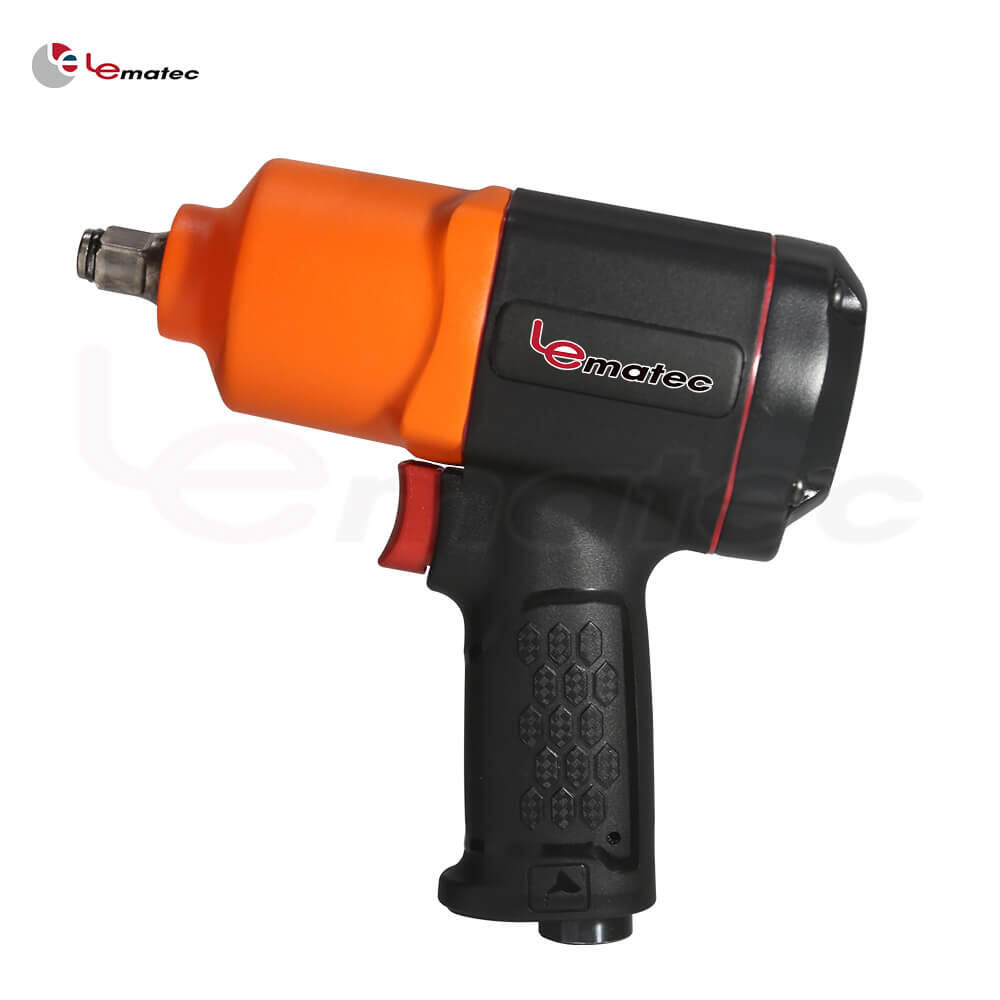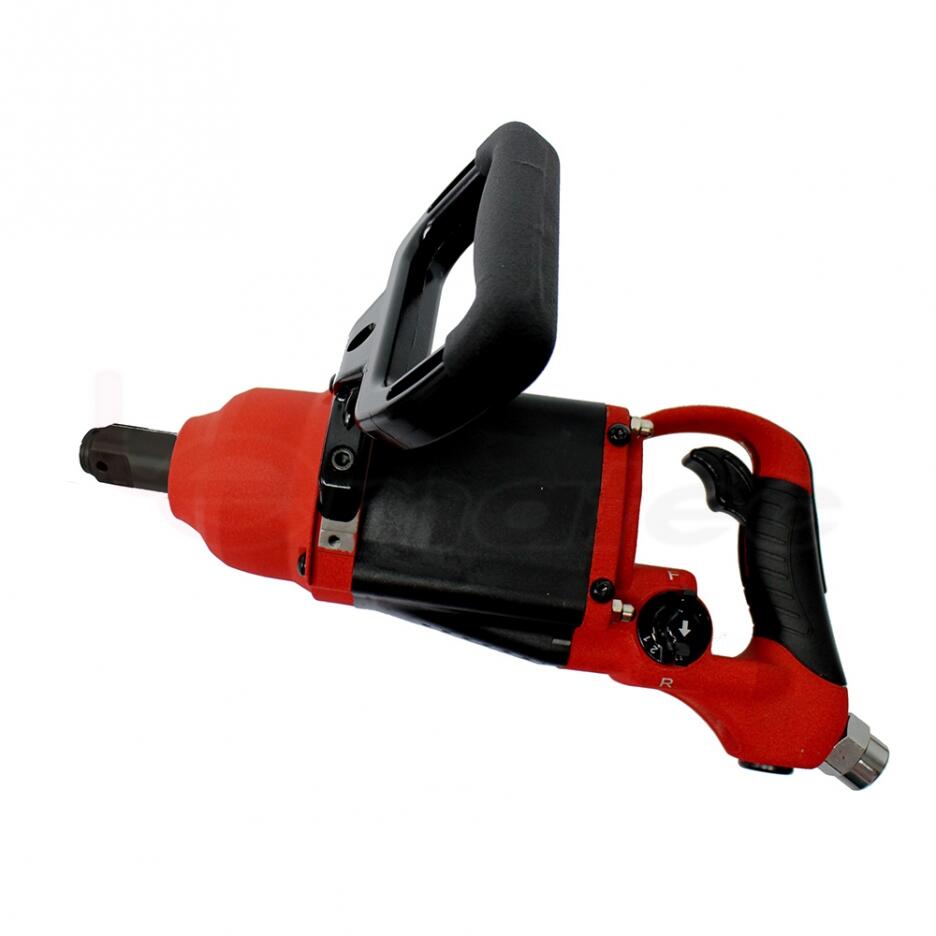How to Use a Pneumatic Air Impact Wrench: A Step-by-Step Guide
Pneumatic impact wrenches are powerful tools used in automotive, construction, and various industrial applications.
It provides high torque output, making them essential for tasks requiring the loosening or tightening bolts and nuts. This step-by-step guide will walk you through the proper usage of a pneumatic impact wrench, ensuring safety and efficiency.
Step 1: Gather Your Equipment
Before using an air impact wrench, make sure you have the following equipment:
- Air impact wrench
- Air compressor
- Air hose
- Properly sized impact sockets
- Personal protective equipment (PPE), such as safety glasses and gloves
Step 2: Set Up the Air Compressor
- Choose the Right Compressor: Make sure your air compressor meets the air needs of your impact wrench. Check the air wrench and compressor's CFM (cubic feet per minute).
- Connect the Air Hose: Connect one end of the air hose to the air compressor and the other to the impact wrench. Make sure there is no air leakage at the connection. It is recommended that anti-leakage tape be wrapped around the threads.
Step 3: Adjust the Air Pressure
- Check Manufacturer’s Specifications: Set the air pressure according to the impact wrench manufacturer’s recommendations, usually between 90 to 120 PSI (pounds per square inch).
- Regulate the Pressure: Use an air regulator to adjust pressure. Pressure that is too high or too low will affect the performance and service life of the wrench.
Step 4: Select the Appropriate Socket
- Choose the Right Socket Size: Select an impact socket that fits the bolt or nut you are working on. Avoid using regular sockets, as they may crack under high torque.
- Attach the Socket: Securely attach the socket to the impact wrench's anvil.
Step 5: Safety First
- Wear PPE: Always wear safety glasses and gloves to protect yourself from flying debris and sharp edges.
- Check the Work Area: Ensure the area is clear of obstacles and bystanders.
Step 6: Using the Impact Wrench
- Position the Wrench: Place the socket over the bolt or nut. Hold the wrench firmly with both hands.
- Trigger Control: Gently press the trigger to start the wrench. Gradually increase the pressure to avoid stripping the bolt or nut.
- Loosening Bolts: To loosen a bolt, set the wrench to the reverse mode and apply short bursts to free the bolt.
- Tightening Bolts: Set the wrench to the forward mode to tighten a bolt. Be cautious not to over-tighten, as this can damage the bolt or component.
Applications and Torque Levels
Pneumatic impact wrenches are available in different grades and torque levels to suit various applications. The following are common applications and torque ranges:
- Light-Duty Impact Wrenches (Up to 150 ft-lbs):
- Applications: Ideal for minor car repairs, furniture assembly, and other light maintenance tasks.
- Example Tools: 1/4-inch and 3/8-inch drive impact wrenches.
- Medium-Duty Impact Wrenches (150 to 400 ft-lbs):
- Applications: Suitable for general automotive work, including tire changes, engine repairs, and medium-sized bolts.
- Example Tools: 1/2-inch drive impact wrenches.
- Heavy-Duty Impact Wrenches (400 to 1,200 ft-lbs):
- Applications: Perfect for truck maintenance, construction, and industrial applications where high torque is necessary.
- Example Tools: 3/4-inch and 1-inch drive impact wrenches.
- Ultra Heavy-Duty Impact Wrenches (Over 1,200 ft-lbs):
- Applications: Used in large-scale industrial settings, heavy machinery maintenance, and tasks requiring extremely high torque.
- Example Tools: Specialized 1-inch drive impact wrenches.
Pneumatic impact wrenches come in various sizes, each designed for specific applications based on their torque output and compatibility with different bolt sizes. Here's a breakdown of the common sizes - 3/8", 1/2", 3/4", and 1" - and their respective uses:
- 3/8" Air Impact Wrench:
- Size: This compact wrench typically features a 3/8-inch drive size.
- Torque Output: Suitable for light to medium-duty tasks, producing torque ranging from 50 to 150 ft-lbs.
- Applications: Ideal for automotive repairs, small machinery maintenance, and furniture assembly.

- 1/2" Air Impact Wrench:
- Size: Featuring a 1/2-inch drive size, this wrench is a versatile option.
- Torque Output: Offers medium to high torque output, ranging from 150 to 400 ft-lbs.
- Applications: Widely used in automotive repair shops for tire changes, engine repairs, and general maintenance tasks. Also suitable for medium-sized bolts and nuts in construction and industrial settings.

- 3/4" Air Impact Wrench:
- Size: With a 3/4-inch drive size, this wrench is larger and more powerful.
- Torque Output: Provides high torque output, typically 400 to 1,200 ft-lbs.
- Applications: It is commonly used in heavy-duty applications such as truck maintenance, agricultural machinery repair, and construction equipment assembly. It is ideal for larger bolts and nuts requiring substantial torque.

- 1" Air Impact Wrench:
- Size: The largest of the common sizes, featuring a 1-inch drive size.
- Torque Output: Offers ultra-high torque output, exceeding 1,200 ft-lbs in some cases.
- Applications: Reserved for specialized industrial applications where extreme torque is necessary, such as large-scale machinery maintenance, bridge construction, and heavy equipment manufacturing.
Choose the right size air impact wrench based on your application and torque requirements to ensure efficient performance for various uses.
Step 7: Post-Use Maintenance
- Disconnect the Air Supply: Turn off the air compressor and disconnect the air hose from the wrench.
- Clean the Wrench: Wipe down the wrench to remove dirt and debris. Inspect for any signs of wear or damage.
- Store Properly: Store the impact wrench in a dry, secure place to protect it from moisture and dust.
Tips for Optimal Use
- Lubrication: Regularly lubricate the impact wrench per the manufacturer's guidelines to ensure smooth operation.
- Check Connections: Periodically check all air connections for leaks and secure fittings.
- Practice: If you’re new to using an impact wrench, practice on scrap materials to get a feel for the tool’s power and control.
Air impact wrenches can significantly improve the efficiency of automotive and industrial repairs. Refer to the steps and guidelines in this article to ensure safe operation. Remember all safety precautions and regularly maintain your air tools for optimal performance and extended life. Follow us for more articles and guides on air tools.
About the Author:

Vic Chen is the General Manager at Lematec and has over 10 years of experience in digital marketing and the pneumatic industry.











